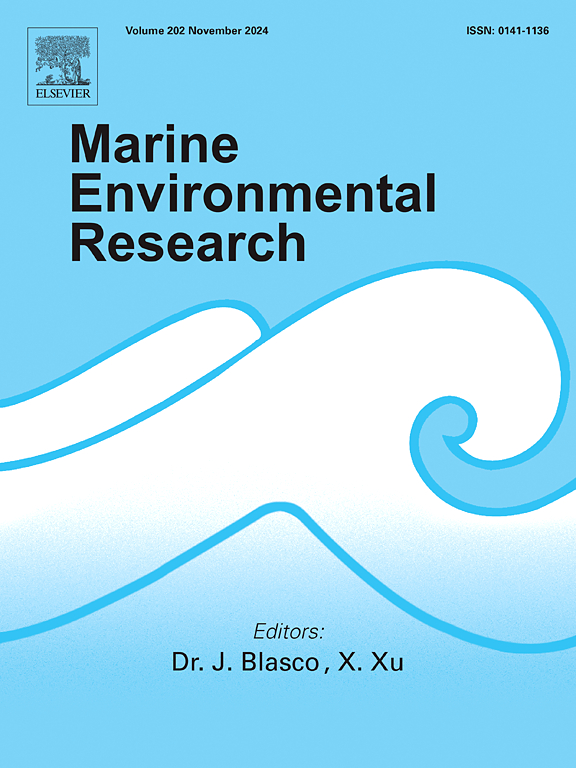基于机器学习的东南亚仰光河口红树林测绘变化检测
IF 3.2
3区 环境科学与生态学
Q2 ENVIRONMENTAL SCIENCES
引用次数: 0
摘要
红树林在稳定海岸线、减少波浪能、保护沿海栖息地和邻近土地用途免受极端事件影响方面得到全球公认。然而,由于自然和人为干扰,大多数地区的红树林损失令人震惊。利用陆地卫星图像和机器学习方法,研究了1988年至2023年仰光河口红树林覆盖和海岸线迁移的动态变化。红树林覆盖面积从1988年的1175公顷减少到2011年的531公顷。然后到2023年增加到5470公顷,净收益超过4000公顷。同时,使用红树林植被线的海岸线分析表明,92%的海岸线向海推进。西岸线的平均吸积和侵蚀速率分别为+35.6 m/年和- 1.7 m/年,而东岸的吸积和侵蚀速率分别为+79.6 m/年和- 29.1 m/年。主要发现强调了红树林与相对SLR保持同步的能力,水产养殖是2008年后红树林损失的主要驱动因素,并强调了沉积变化和高沉积物可利用性、广泛的潮滩存在以及沿海庇护在支持近期红树林扩张中的作用。虽然需要进一步的研究,但这些见解为未来的保护和管理工作提供了宝贵的基础。本文章由计算机程序翻译,如有差异,请以英文原文为准。
Machine learning-based detection of changes in mapping the mangrove forest of the Yangon estuary, Southeast Asia
Mangrove forests are globally acknowledged for stabilizing coastlines, reducing wave energy, and protecting coastal habitats and adjacent land uses from extreme events. However, most regions experience alarming mangrove loss against natural and human disturbances. This study profiles dynamic changes in mangrove cover and shoreline migration along the Yangon estuary using Landsat imagery and machine learning approach from 1988 to 2023. Mangrove cover declined from 1175 ha in 1988 to 531 ha by 2011. It then increased to 5470 ha by 2023, resulting in a net gain of over 4000 ha. Concurrently, shoreline analysis using the mangrove vegetation line, indicates 92 % seaward progradation along the coastline. The western shoreline recorded mean accretion and erosion rates of +35.6 m/yr and −1.7 m/yr, while the eastern side showed more dynamic rates of +79.6 m/yr for accretion and −29.1 m/yr for erosion. Key findings highlight mangroves’ ability to keep pace with the relative SLR, aquaculture as the dominant driver of post-2008 mangrove loss, and underscore the roles of sedimentary variation and high sediment availability, extensive tidal flat existence, and coastal sheltering in supporting recent mangrove expansion. While further studies are needed, these insights offer a valuable foundation for future conservation and management efforts.
求助全文
通过发布文献求助,成功后即可免费获取论文全文。
去求助
来源期刊

Marine environmental research
环境科学-毒理学
CiteScore
5.90
自引率
3.00%
发文量
217
审稿时长
46 days
期刊介绍:
Marine Environmental Research publishes original research papers on chemical, physical, and biological interactions in the oceans and coastal waters. The journal serves as a forum for new information on biology, chemistry, and toxicology and syntheses that advance understanding of marine environmental processes.
Submission of multidisciplinary studies is encouraged. Studies that utilize experimental approaches to clarify the roles of anthropogenic and natural causes of changes in marine ecosystems are especially welcome, as are those studies that represent new developments of a theoretical or conceptual aspect of marine science. All papers published in this journal are reviewed by qualified peers prior to acceptance and publication. Examples of topics considered to be appropriate for the journal include, but are not limited to, the following:
– The extent, persistence, and consequences of change and the recovery from such change in natural marine systems
– The biochemical, physiological, and ecological consequences of contaminants to marine organisms and ecosystems
– The biogeochemistry of naturally occurring and anthropogenic substances
– Models that describe and predict the above processes
– Monitoring studies, to the extent that their results provide new information on functional processes
– Methodological papers describing improved quantitative techniques for the marine sciences.
 求助内容:
求助内容: 应助结果提醒方式:
应助结果提醒方式:


